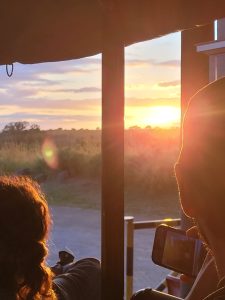 There is more put into creating succinct and beautiful prose than one would think. After several years of doing everything but writing, I have become a fledgling writer. I never suspected that words coming directly from my brain needed revision, revamping, and reduction, much less that I would need to analytically examine the words I was using! I naïvely thought editing would make them somehow less “mine.”
There is more put into creating succinct and beautiful prose than one would think. After several years of doing everything but writing, I have become a fledgling writer. I never suspected that words coming directly from my brain needed revision, revamping, and reduction, much less that I would need to analytically examine the words I was using! I naïvely thought editing would make them somehow less “mine.”
Words have power to create images that transform and inspire others, so it makes sense to be precise and rethink the diction we employ. Not only must our stories make sense for the reader, but they should also engage her interest, using flow, tone, and cohesion. In “English 374: Editing Essentials”, I wanted to explore how using diverse and vivid verbs could completely transform my sentences, making them far more enticing to readers. Verbs conjure! They are the drama; the action; the pace.
When being simplistic in creating detail, we are prone to using state-of-being, or common verb phrases, which are less interesting, sometimes unneeded, and, more often than not, could be replaced with thought- or picture-provoking verbs.
I like consuming writing that entices imagination, like this passage from The Virgin Suicides by Jeffrey Eugenides: “The sky grew darker, and light abandoned the daytime, so that we found ourselves always moving in a timeless murk, the only way to discern the hour the taste of our burps, tooth-pasty in the morning, redolent in the afternoon of the jellied beef of school cafeteria meals.”
A changed verb transforms an ordinary sentence, giving it movement and drama and verve.
Consider the following two sentences:
“This dress was something new for Sadie that she could wear to celebrations and look enticing in for Jack.”
“Magnificently new, and alluring, Sadie’s dress fit perfectly for celebrations and would knock the socks off of Jack.”
Here, I transformed the sentence by using “fit perfectly” in place of the verb “was,” eliminated “could wear” (dull!), and substituted a figurative phrase, “would knock the socks off” in place of “look”.
Of course, it all depends on the tone you wish to achieve, as well the picture you want to paint. Using different forms of verbs can transform language and ramp up audience interest level. Everyone’s idea of “knock your socks off” is different, but it is always good!
Verbs also help determine tense and style, belonging, and attributes. There are different meanings for the same verb; you can sound upset, sound the horn, or be safe and sound.
In those examples, the word “sound” becomes a verb: Jill sounded upset; the horn sounded to alert him. This business of learning grammar is quite complicated at times.
Essentially, the identified verb, or verb phrase, determines all other parts of speech in the sentence. It is the active or passive state that determines who does what.
In writing, we get to decide the picture we create; it remains the writer’s choice, but we often assume the reader’s competence. The ability of a great writer to determine what will best capture and retain the reader’s imagination does not come without repeated revisions.
I have begun the lifelong process of learning and becoming grammatically adept.







Be First to Comment